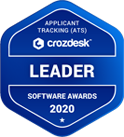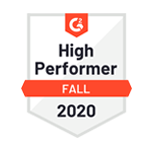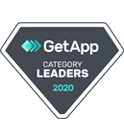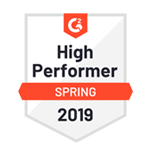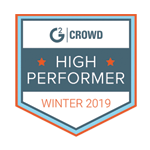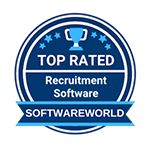Finding top talent feels like searching for needles in digital haystacks. You scroll through LinkedIn, check Twitter, browse GitHub, and still miss qualified candidates. People aggregators solve this problem by bringing scattered candidate data into one place.
Understanding People Aggregators in Recruitment
A people aggregator is software that gathers candidate information from multiple online sources. Think of it as your personal talent detective. It searches social media sites, professional networks, forums, and websites automatically.
These tools compile comprehensive profiles of potential candidates. You get job history, skills, endorsements, publications, and more. All consolidated into unified candidate profiles.
People aggregators help you find passive candidates. These professionals aren’t actively job hunting but might consider new opportunities. Your talent pool expands beyond active job seekers.
The technology uses disambiguation algorithms to match profiles correctly. Even common names like John Smith get sorted accurately. Advanced systems refresh candidate data periodically to keep information current.
How People Aggregators Work?
People aggregators function like search engines built specifically for talent. They crawl the web continuously, indexing professional information across platforms.
The process starts with web scraping technology. Automated systems scan LinkedIn profiles, GitHub repositories, Stack Overflow contributions, and social media accounts. Data extraction happens in real-time.
Next comes profile consolidation. The aggregator matches scattered information to individual candidates. Your software engineer might have a LinkedIn profile, GitHub account, and Twitter presence. The aggregator connects these dots.
You can search using specific criteria. Need a Python developer in California with five years of experience? Enter your parameters. The system filters candidates matching your requirements.
Integration capabilities set quality aggregators apart. Many connect directly with applicant tracking systems. This streamlines your recruitment workflow significantly.
People Aggregators vs Job Aggregators: Key Differences
People aggregators and job aggregators serve different purposes. Understanding this distinction helps you choose the right tools.
Job aggregators compile job postings from multiple sources. Indeed and ZipRecruiter are classic examples. They help job seekers find opportunities. Candidates use these platforms actively.
People aggregators focus on candidate discovery instead. They help recruiters find talent proactively. You’re not waiting for applications. You’re identifying prospects before they even apply.
Job aggregators work with active job seekers. People aggregators reveal passive candidates. This difference matters tremendously for competitive roles.
Think of job aggregators as casting wide nets. People aggregators are precision tools. You target specific skills, experience levels, and locations. The approach becomes strategic rather than reactive.
Benefits of People Aggregators for Staffing Agencies
People aggregators transform how staffing agencies source candidates. Time savings come first. Instead of manually searching multiple platforms, you access consolidated data instantly.
Your candidate pool expands dramatically. Passive candidates often represent the best talent. They’re employed, skilled, and not desperately job hunting. People aggregators make these professionals discoverable.
Contact information becomes accessible. Many aggregators provide email addresses and phone numbers. You can reach out directly without intermediaries.
Quality improves through better targeting. Search by technical skills, programming languages, certifications, or industry experience. Results align precisely with client requirements.
Competitive advantage follows naturally. While other agencies post jobs and wait, you proactively recruit top performers. Your placement speed increases significantly.
Cost efficiency matters for agency profitability. People aggregators typically charge monthly subscriptions. Compare this to expensive job board postings or recruiter fees. The return on investment becomes clear quickly.
How RecruitBPM Simplifies Candidate Sourcing?
RecruitBPM brings candidate sourcing and management together seamlessly. You don’t need separate tools for discovery and tracking.
The platform combines ATS functionality with advanced sourcing capabilities. Import candidate data from people aggregators directly into your pipeline. No manual data entry required.
Customizable workflows let you process candidates efficiently. Tag prospects by skill set, experience level, or client fit. Your team collaborates easily with shared access.
AI-powered automation handles repetitive tasks. Schedule outreach emails, set follow-up reminders, and track engagement automatically. Focus your energy on relationship building instead.
Analytics show which sourcing channels deliver results. Understand where your best candidates originate. Optimize your recruitment strategy based on real data.
The end-to-end approach eliminates platform switching. Source candidates, communicate with prospects, manage client relationships, and track placements. Everything happens within RecruitBPM.
Integrating People Aggregators with Your ATS
Integration between people aggregators and your ATS creates powerful synergies. Manual data transfer wastes time and introduces errors.
Modern people aggregators offer API connections. These technical integrations enable automatic data flow. Candidate profiles transfer directly into your applicant tracking system.
Start by evaluating integration capabilities before choosing tools. Confirm your people aggregator connects with RecruitBPM or your current ATS. Seamless data exchange should be standard.
Map data fields carefully during setup. Ensure job titles, skills, contact information, and work history transfer accurately. Test the integration thoroughly before going live.
Establish workflows for imported candidates. How will your team review new prospects? Who handles initial outreach? Clear processes prevent candidates from falling through cracks.
Monitor data quality continuously. People aggregators source from public profiles, which sometimes contain outdated information. Build verification steps into your workflow.
Best Practices for Using People Aggregators
Strategic keyword selection drives people aggregator success. Use industry-standard job titles and technical skills. Avoid internal jargon that candidates wouldn’t use publicly.
Boolean search operators refine your results. Combine keywords with AND, OR, and NOT operators. Find candidates with specific skill combinations or exclude certain criteria.
Location parameters help with geographic targeting. Search specific cities, states, or regions. Remote work trends make this more flexible than before.
Privacy concerns require attention. People aggregators use publicly available information. Still, approach candidates respectfully. Explain how you found their information when making contact.
Regular searches capture emerging talent. Set up saved searches for recurring needs. Run them weekly to identify newly available candidates.
Combine people aggregators with other sourcing methods. Employee referrals, professional associations, and networking events still matter. Multiple channels produce the best results.
Verify information before reaching out. Public profiles sometimes contain errors or outdated details. Quick verification prevents embarrassing mistakes.
Personalize your outreach significantly. Generic messages get ignored. Reference specific projects, skills, or achievements you discovered through the aggregator.
Conclusion
People aggregators give staffing agencies a competitive edge in talent acquisition. These tools expand your candidate pool beyond active job seekers. You discover qualified professionals before competitors even know they exist.
The technology consolidates scattered online data into comprehensive profiles. Your sourcing becomes more efficient, targeted, and successful. Integration with platforms like RecruitBPM streamlines the entire recruitment workflow.
Start small if people aggregators are new to your agency. Choose one tool and master it thoroughly. Build effective search strategies and outreach processes. Scale your usage as results demonstrate value.
The recruitment landscape keeps evolving. Passive candidate sourcing becomes increasingly important. People aggregators provide the technology advantage that modern staffing agencies need.
Ready to transform your candidate sourcing? Explore how RecruitBPM’s integrated platform makes talent acquisition more efficient and effective.





